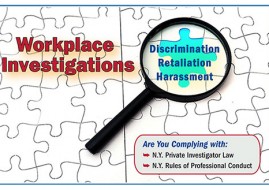Perils in Business Transactions with Client
By Mary C. Daly [Originally published in NYPRR March 2000]
Entering into a business transaction with a client is fraught with ethical peril. Courts, disciplinary bodies, and bar association ethics committees have uniformly warned lawyers of the myriad threats a business relationship poses to the proper working of a lawyer-client relationship. These authorities have consistently expressed the view that business relationships can seriously impair lawyers’ independence in making professional judgments. The potential for impairment exists regardless of a lawyer’s motives. It is no less severe because a lawyer is genuinely seeking to assist a client in financial difficulty and not acting for personal gain.
Despite repeated cautionary advice, lawyers have persisted in engaging in activities with clients such as borrowing and lending money and investing, jointly in real estate transactions. [See, e.g., Matter of Mayeroff, 213 A.D.2d 1, 664 N.Y.S.2d 564 (2d Dept. 1995).] The sale of insurance products to a client constitutes a business transaction with a client even though the lawyer is not providing legal services to the client in connection with the sale. In some circumstances, even a fee arrangement will be characterized as a business transaction with a client. [See, Association of the Bar of the city of New York, Comm. on Professional and Judicial Ethics, Op. 1988-7, taking a mortgage and promissory note to secure a fee constitutes a business transaction with a client.] Today, transactions with clients have taken a new twist as many Silicon Valley and Silicon Alley law firms reportedly take a financial stake in their dot.com clients.
1999 Changes in Code Underscore Risks
The 1999 amendments to the Lawyer’s Code of Professional Responsibility (Lawyer’s Code) underscore the ethical risks inherent in both the standard and new forms of lawyer-client business transactions by imposing additional obligations on a lawyer who proposes to enter into such a transaction. In large measure, these obligations reflect the jurisprudence that evolved as the courts interpreted the relevant pre-amendment Lawyer’s Code provisions. [See, e.g., Matter of Gold, 240 A.D.2d 74, 668 N.Y.S.2d 605 (1st Dept. 1998).] This article describes the amendments and offers some practical tips for avoiding charges of unethical conduct with respect to the traditional types of dealings. Part II, published in NYPRR May 2000, discusses the new forms of investment in dot.com clients and analyze how the 1999 amendments affect them.
A lawyer who intends to enter into a business transaction with a client must scrupulously comply with the requirements of DR5-104. The purpose is to preserve a lawyer’s exercise of independent professional judgment through the avoidance of conflicts of interest. Subsection A of DR 5-104 applies to any business transaction in which (1) a lawyer and client have “differing interests therein” and (2) the client expects the lawyer “to exercise professional judgment therein for the protection of the client.”
Both provisions contain traps for the unwary. For example, “differing interests” is defined in the Lawyer’s Code as including “every interest that will adversely affect either the judgment or the loyalty of a lawyer to a client, whether it be a conflicting, inconsistent, diverse, or other interest.” It is difficult to imagine any fact pattern describing a business transaction between a lawyer and a client in which they would not have “differing interest there.” When the transaction does not require the lawyer to provide any legal services, the client may not expect the lawyer to exercise his professional judgment. But even in this circumstance, caution is in order. If the business transaction involves ongoing contact between the lawyer and the client (for example, the management of property jointly owned by the lawyer and the client ), the client may claim that over the course of time the lawyer assumed a counseling function, advising the client on legal matters relating to the client’s interest in the property and therefore owed the client a fiduciary duty to provide conflict-free advice.
Lawyer’s Conduct Must Pass 3-Prong Test
Subsection A of DR 5-104 does not flatly prohibit a lawyer from entering into a business transaction with a client even in those situations in which the two conditions are present. For the lawyer’s conduct to pass ethical muster, however, it must satisfy a three-prong test: the first prong focuses on the substance of the transaction, the second on the advice given by the lawyer, and the third on written consent. The first prong requires that the transaction and the terms on which the lawyer acquires the interest must be “fair and reasonable to the client” and “fully disclosed and transmitted in writing to the client in a manner that can be reasonable understood by the client.” The key language is, of course, “fair and reasonable” and “fully disclosed.” Fair and reasonable, like beauty, are in the eye of the beholder. Moreover, the beholder here is a judge, a jury, or a disciplinary panel reviewing a transaction with the benefit of hindsight. A transaction that appeared to the lawyer as nothing more than a business deal in which both the client’s and lawyer’s interest were fully protected, may appear to a disinterested reviewer several years later as overreaching and lopsided in the lawyer’s favor.
A disclosure that the lawyer thought adequate in light of the client’s education, experience, and business sophistication may appear incomplete and cursory to a fact finder whose only contact with the client is the client’s testimony. Furthermore, some conflicts are not waivable regardless of the fullness of the disclosure. [See, e.g., N.Y. State Bar Op. 711 (1999).] (Because of the danger of overreaching, a lawyer may not sell long-term care insurance to an estate-planning client.) The second prong requires the lawyer to advise the client to seek the advice of independent counsel. While DR 5-104 does not define “independent,” the rule obviously excludes any lawyer who is in an associate partner or of-counsel relationship with the conflicted lawyer. If the client asks the conflicted lawyer’s advice in selecting independent counsel, the wises response should be to decline that advice. If that response is not practical, the lawyer should give the client the names of several lawyers. Each identified lawyer should be truly independent of the conflicted lawyer. Both the conflicted lawyer and the “independent” counsel leave themselves open to possible disciplinary charged and civil liability if they have an on-going relationship in other matters or have had such a relationship in the past and do not fully disclose this to the inquiring client.
Third Prong Requires Client Consent
The third prong requires the client to consent “in writing, after full disclosure, to the terms of the transaction and to the lawyer’s inherent conflict of interest in the transaction.” Facts and circumstances determine what constitutes full disclosure. Among the relevant considerations are the client’s education, experience, business acumen, and financial sophistication, the complexity of the transaction, the obvious and hidden risks to the client if the transaction fails, and the degree to which the transaction’s terms protect the lawyer’s interests at the expense of the client. While the rule on it s face appears to require only that the client’s bare consent be in writing, a lawyer should put both the terms of the transaction and a description of the lawyer’s inherent conflict of interest in writing as well. Attaching a copy of the contract between the lawyer and client and incorporating it by reference into the document evidencing the client’s consent should clearly suffice as proof of the terms of the transaction to which the client is consenting. An adequate description of the conflict is more problematic. The lawyer runs the risk of saying too little (leaving the lawyer open to a claim that the client was not fully informed) or saying too much (prompting the client to cancel the transaction). Explaining the conflict in writing, however, is clearly the wiser choice. It forces the lawyer to think more carefully about the nature of the conflict and, frequently, to describe it more clearly to the client. It facilitates communication between the client and independent counsel about the nature of the conflict and the dangers to lawyer independence that the transaction may pose. Finally, in the event of a subsequent disagreement between the lawyer and client, it offers some evidence of the lawyer’s good faith in entering into the transaction with the client.
Rule for Literary Rights
DR 5-104(B) governs the conduct of a lawyer who enters into a transaction with a client involving literary or media rights. The risk that such a transaction poses is self-evident. If a lawyer holds literary or media rights to the client’s “story,” those rights are likely to precipitate a conflict between the lawyer’s self-interest in maximizing the profitability of the rights and the client’s interest in disposing of the matter on terms most favorable to himself. The value of the literary or media rights in a notorious criminal case might be significantly greater if a trial took place, whereas a plea bargain might best serve the client’s interests. Accordingly, subsection (B)(1) flatly prohibits a lawyer from acquiring “an interest in the literary or media rights with respect to the subject matter of the employment or proposed employment.”
DR 51-40(B)(2) extends the prohibition to third parties. A new 1999 amendment prohibits a lawyer from negotiating or entering into any arrangement with any other person in which the lawyer transfers or assigns any interest in literary or media rights with respect to the subject matter of the representation. In other words, the lawyer may neither sell nor negotiate to sell the lawyer’s “story” prior to the conclusion of all aspects of the matter giving rise to the employment. The lawyer’s duty under both subsection (B)(1) and (B)(2) extends to any related appeal or associated proceeding. [See ,N.Y. City Bar Op. 1988-6 (1988).]
Finally, lawyers should not forget that the case law and ethics opinions relating to other disciplinary rules must also be consulted for supplemental guidance whenever a business transaction with a client is contemplated. [See, e.g., DR 5-101, Conflicts of Interest-Lawyer’s Own Interest; and DR 5-103, Avoiding Acquisition of Interest in Litigation.]
Mary C. Daly is James H. Quinn Professor of Legal Ethics at Fordham Law and Chair, Committee on Professional and Judicial Ethics, Association of the Bar of the City of New York.
DISCLAIMER: This article provides general coverage of its subject area and is presented to the reader for informational purposes only with the understanding that the laws governing legal ethics and professional responsibility are always changing. The information in this article is not a substitute for legal advice and may not be suitable in a particular situation. Consult your attorney for legal advice. New York Legal Ethics Reporter provides this article with the understanding that neither New York Legal Ethics Reporter LLC, nor Frankfurt Kurnit Klein & Selz, nor Hofstra University, nor their representatives, nor any of the authors are engaged herein in rendering legal advice. New York Legal Ethics Reporter LLC, Frankfurt Kurnit Klein & Selz, Hofstra University, their representatives, and the authors shall not be liable for any damages resulting from any error, inaccuracy, or omission.
Related Posts
« Hybrid Fee Agreements: Okay or No-kay? Administrative Board Closes ‘Pay to Play’ Saga: 1995–2000 »







